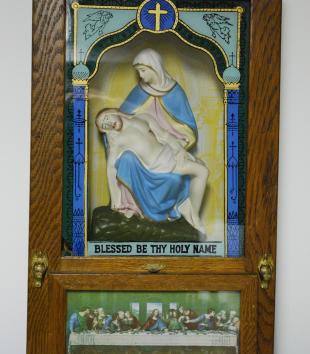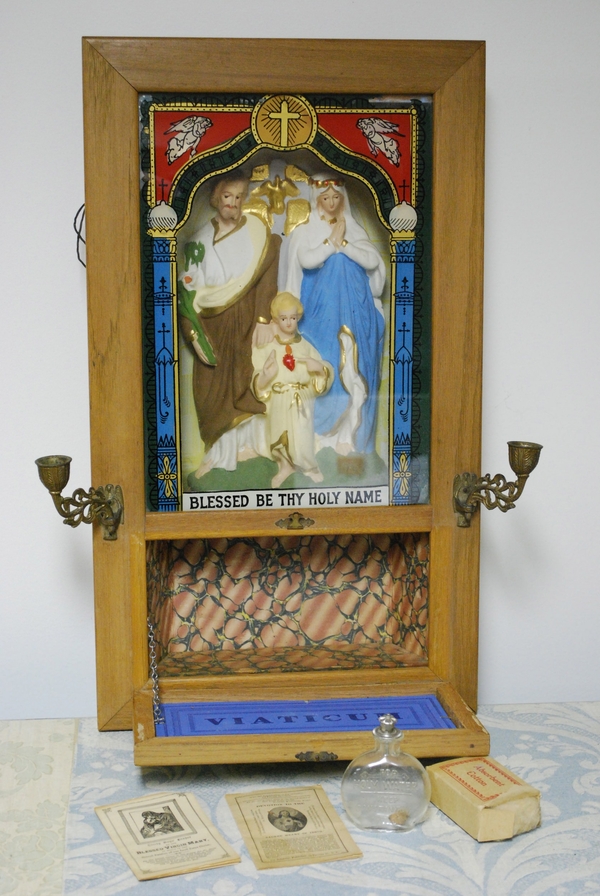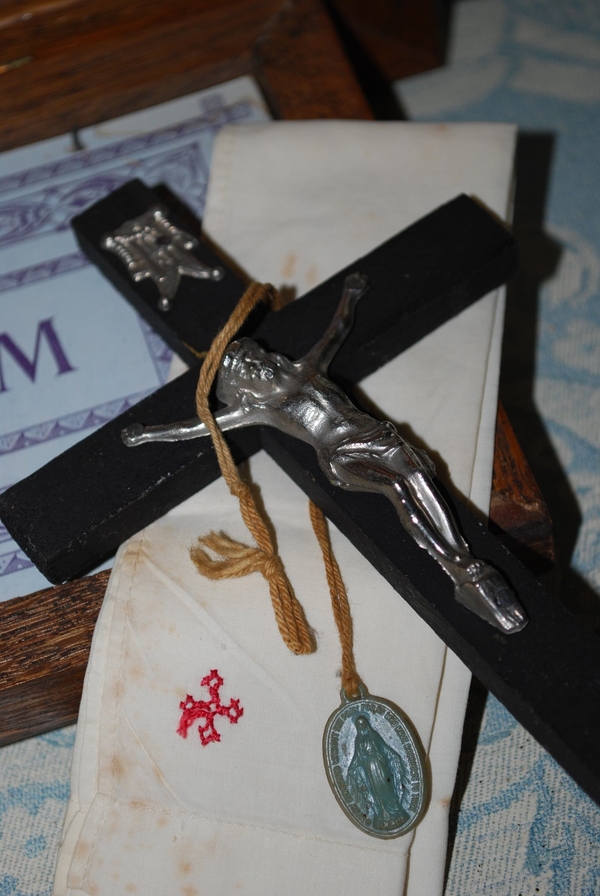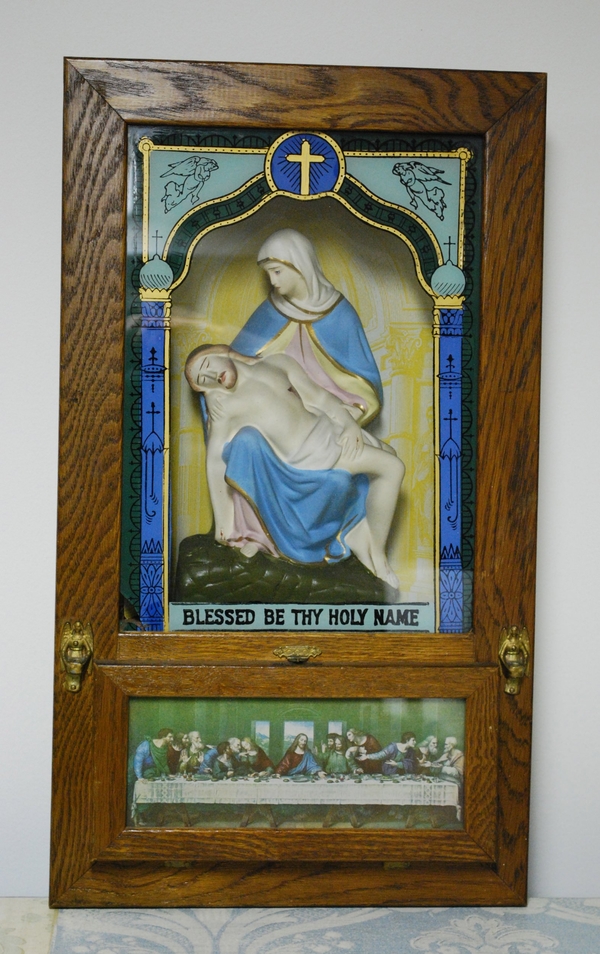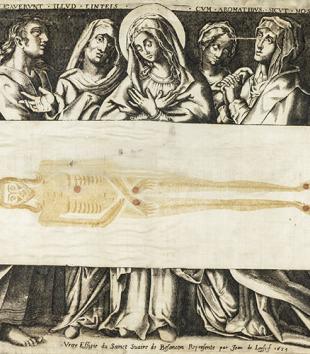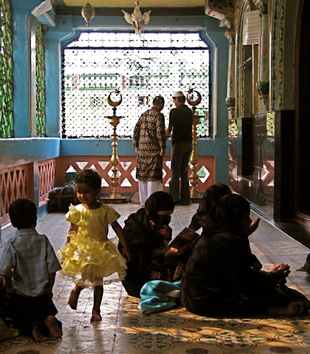Among the material items that might occupy the pre-Vatican II American Catholic home, regardless for the most part of the occupant’s ethnicity or familial nation of origin, the last rites cabinet or viaticum (Latin for “supply of provisions for a journey”) asserted a powerful daily and nightly presence. Located almost always in the bedroom, these pictorial objects stored utensils to provide for the postmortem transit of faithful Catholics from this world to the next. Over the course of a lifetime, these cabinets reminded beholders of the religious care of human bodies; of associations with the physical pains suffered by Jesus; of divine sustenance in time of illness, trial, and death; and of the hope of bodily resurrection. By the late nineteenth century, domestic viaticum cabinets took several shapes, some intended to be installed in or hung from the bedroom wall, others designed to sit on top of a bureau or dresser, in either case creating a home shrine or altar. The cabinets were made in numerous materials, with wood, metal, glass, and plaster, most often in some combination, numbering among frequent media of construction.
While these cabinets and sets could be acquired through commercial ecclesiastical supply catalogs, they could also be individualized. Surviving sets indicate that they both lost and gained items over time (See Fig. 1). Small glass bottles for holy water and oil, candles, absorbent cotton, a linen napkin, a spoon, a cup, a crucifix, and one or two small plates, often bearing the IHS monogram of Jesus, numbered among the objects generally included at time of purchase, along with a sheet of instructions for use. Consumers made their own contributions to the sets as well.Bottles of purportedly healing waters from the site of the Marian visitation at Lourdes, France, show up in some sets. Devotional or prayer cards are another frequent addition, as are religious medals. In this cabinet (Fig. 2), the so-named “Miraculous Medal” depicts the Madonna of the Immaculate Conception as she reportedly appeared to the French Saint Catherine Labouré in 1830. Some believe that wearing this medal at the hour of death carries special spiritual benefits, explaining its particular suitability in a viaticum.
Common iconographies for both wall and dresser-top versions of these domestic objects included, in the upper portions, either the Holy Family (child Jesus with exposed sacred heart, Mary, and Joseph) (Fig. 1) or the Pieta (in a form appropriated from Michelangelo) (Fig. 3) and, on the lower, either the paired sacred heart of Jesus and immaculate heart of Mary or a Last Supper that replicated Leonardo da Vinci’s famous, and widely reproduced, Milan fresco of the Last Supper of Jesus. The subject of the Last Supper, as viaticum ornamentation, anticipated the final sacramental meal to be offered by a requisite visiting priest at bedside and then consumed by the bedroom’s occupant. In this space it thus called to mind a multi- and inter-sensory ritual experience, involving taste, touch, smell, and sound as well as sight. It also secured the location of the home in a larger parish geography. Sometimes the instruction booklets that came with the purchase of the viaticum asserted, and sought to verify, the item’s legitimate connections to the church hierarchy (as might the ads and catalogs that preceded purchase). Regardless of country of manufacture or use, the pastoral geography that the object mapped thus ultimately extended to Rome, with the individual cabinet’s sanctity heightened, as some brochures and booklets maintained, by this authoritative connection.
Notes
Imprint
10.22332/con.cons.2014.1
1. Sally M. Promey, "Viaticum, Last Rites Cabinet, Sick Call Set," Constellation, in Conversations: An Online Journal of the Center for the Study of Material and Visual Cultures of Religion (2014), doi:10.22332/con.cons.2014.1
Promey, Sally M. "Viaticum, Last Rites Cabinet, Sick Call Set." Constellation. In Conversations: An Online Journal of the Center for the Study of Material and Visual Cultures of Religion (2014). doi:10.22332/con.cons.2014.1
